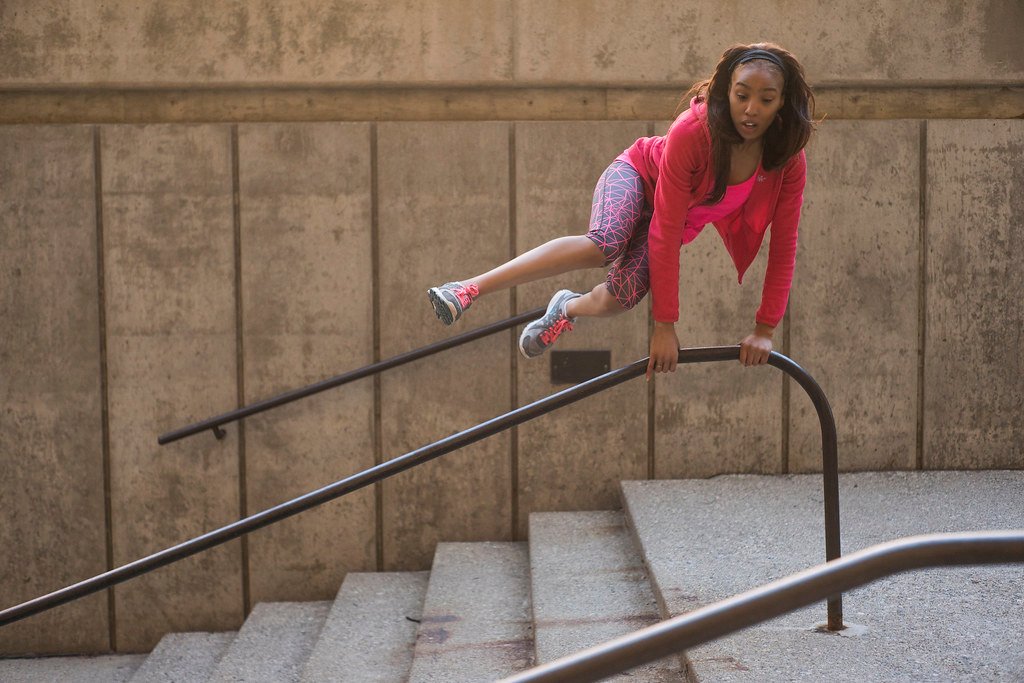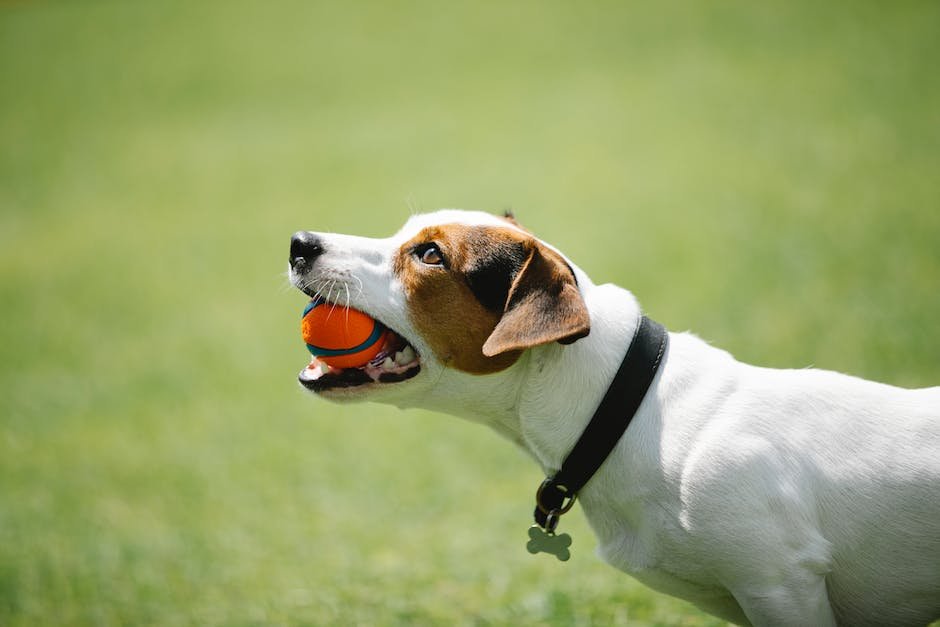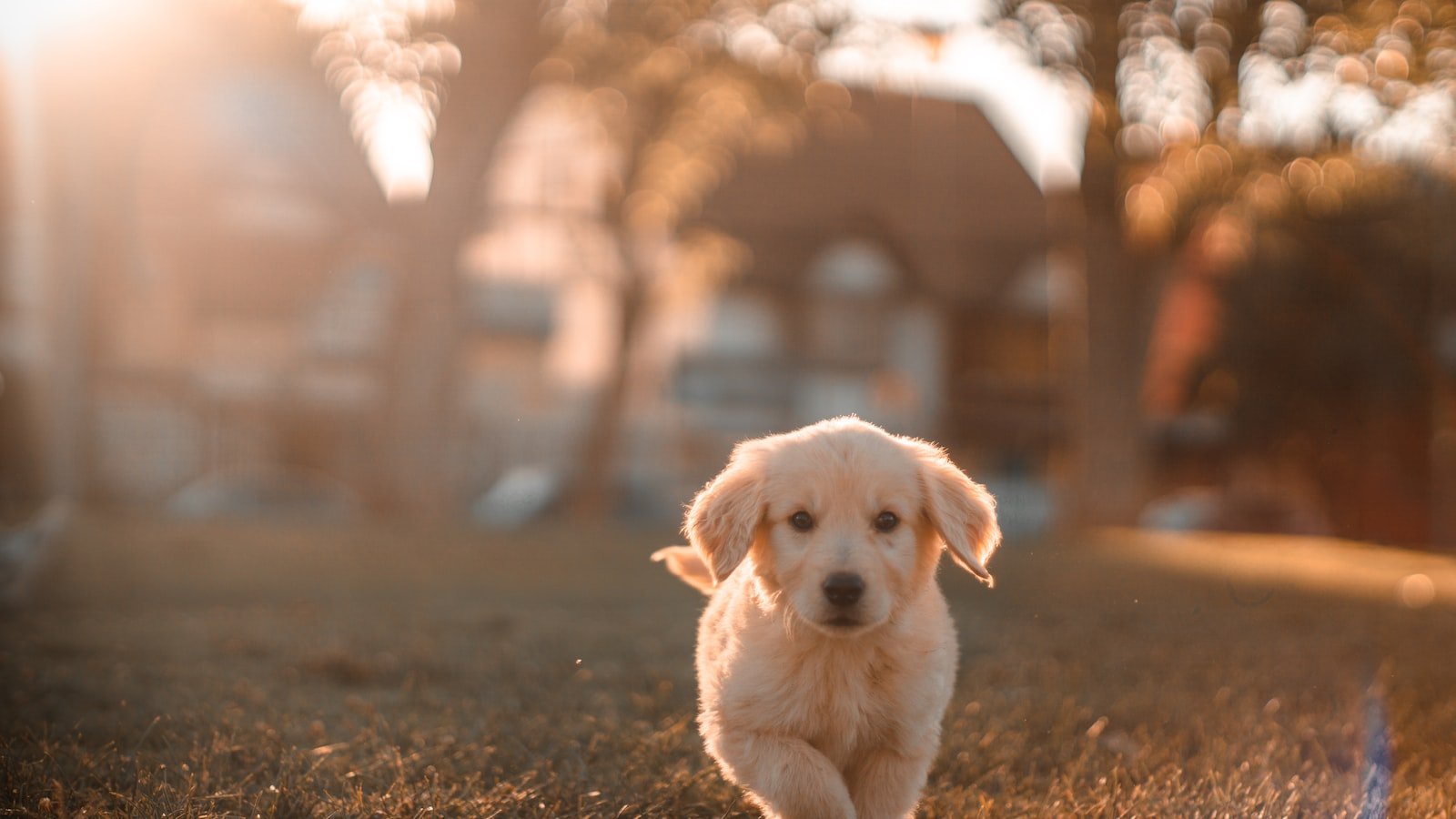Picture this: your four-legged companion gracefully jumping over obstacles, running up walls, and seemingly defying gravity with their nimble moves. No, this isn’t a scene from an action-packed movie; this is parkour for dogs. Urban agility, as it is sometimes called, is a thrilling sport that combines elements of dog training, discipline, and athleticism to create a canine spectacle like no other. If you’ve ever dreamed of transforming your dog into a four-legged acrobat, then look no further. In this article, we will delve into the fascinating world of training your dog for parkour, unlocking their true potential as they conquer urban obstacles with ease. Get ready to embark on an epic journey where you and your furry friend will leap into adventure and defy the laws of gravity together.
Table of Contents
- Understanding the Basics of Parkour: A Key to Training your Dog for Urban Agility
- Choosing the Right Training Methods: Tailoring Techniques to Your Dog’s Abilities
- Building a Solid Foundation: Essential Exercises to Develop Strength and Balance in Your Dog
- Mastering Urban Obstacles: Enrichment Activities to Stimulate Your Dog’s Natural Instincts
- Taking Training to the Next Level: Advanced Parkour Techniques for Canine Performance
- Q&A
- The Way Forward

Understanding the Basics of Parkour: A Key to Training your Dog for Urban Agility
In the world of dog training, the trend of incorporating urban agility exercises like parkour has been on the rise. Parkour, originated from France, involves navigating obstacles in the environment using dynamic movements. This exciting activity not only helps dogs build strength, coordination and confidence, but also strengthens the bond between the dog and its owner.
To get started with training your dog for urban agility, there are a few fundamental aspects of parkour that you need to understand. Firstly, it’s essential to introduce your dog to basic obedience commands such as sit, stay, and recall. These commands form the foundation of control and should be consistently reinforced during parkour training sessions.
Another key aspect is to gradually accustom your dog to different urban surfaces, textures, and heights. Start with lower obstacles such as curbs and gradually progress to more challenging obstacles like walls or railings. It’s important to prioritize safety and ensure that your dog is comfortable and confident before moving on to more advanced maneuvers.
- Invest in a sturdy and comfortable harness for your dog, ensuring their safety during parkour exercises.
- Always warm up your dog with some light exercise and stretching before engaging in any parkour activities.
- Use positive reinforcement techniques like treats and praise to reward your dog for successfully completing an obstacle.
- Don’t rush the training process – allow your dog to learn at their own pace and gradually increase the difficulty level as they progress.
Remember, parkour should be a fun and stimulating activity for both you and your furry friend. So grab your harness, hit the streets, and embark on an incredible urban agility journey with your dog!

Choosing the Right Training Methods: Tailoring Techniques to Your Dog’s Abilities
When it comes to training your furry companion, it’s crucial to remember that every dog is unique. Just like humans, each dog has different abilities and learning styles. To ensure successful training sessions, tailoring techniques to your dog’s abilities is essential.
Understanding your dog’s strengths:
- Start by observing your dog’s behavior and noticing their natural strengths. Are they quick learners? Do they respond better to visual cues or verbal commands?
- Identify any breed-specific traits or tendencies that may influence their learning capabilities.
- Take note of your dog’s energy levels and attention span. Some dogs thrive in high-intensity training sessions, while others may require shorter, more frequent sessions.
Adapting training methods:
- Once you have a clear understanding of your dog’s abilities, tailor your training methods accordingly.
- Use positive reinforcement techniques, such as treats or praise, to encourage desired behaviors. This will motivate your dog and make learning enjoyable for them.
- Be patient and flexible, adjusting your approach if your dog seems overwhelmed or disinterested in a particular exercise. Remember, every dog learns at their own pace.
- Consider seeking professional guidance or attending training classes that cater to your dog’s specific needs.
Monitoring progress and adapting as needed:
- Regularly assess your dog’s progress and make adjustments to your training techniques as necessary.
- Celebrate small victories and milestones along the way, as this will boost your dog’s confidence and motivation.
- Keep track of any challenges or difficulties you encounter during training sessions. This will help you identify potential areas for improvement or seek additional support if needed.
- Remember, each dog is a unique individual, so have fun experimenting with different training methods until you find the ones that work best for your furry friend!

Building a Solid Foundation: Essential Exercises to Develop Strength and Balance in Your Dog
Strong muscles and good balance are key components of a healthy and active lifestyle for your furry friend. Just like humans, dogs benefit greatly from regular exercise to enhance their strength and coordination. So, let’s dive into a collection of essential exercises that will help your dog build a solid foundation of strength and balance.
1. Sit-to-Stand:
The sit-to-stand exercise is a simple yet effective way to improve your dog’s core strength and stability. Start by having your dog sit and then give the command to stand. Repeat this sequence several times, gradually increasing the duration of the sit position. This exercise targets their abdominal muscles, hip flexors, and leg muscles, allowing them to develop stability and control in their movements.
2. Balance Beam:
Create a makeshift balance beam using a low, stable object like a wooden plank or a sturdy cushion. Encourage your dog to walk along the beam, one paw after another. This activity challenges their balance and proprioception, which is their sense of body positioning. Remember to always supervise your dog during this exercise to prevent any accidents or injuries.
3. Stand on Hind Legs:
This exercise is excellent for improving your dog’s hind leg strength and balance. Start by holding a treat above their head, enticing them to stand on their hind legs to reach for it. Reward them when they successfully maintain this position for a few seconds. Gradually increase the duration over time. This exercise engages their core muscles, improves body awareness, and helps enhance overall stability.
Remember, consistency is key when it comes to developing strength and balance in your dog. Start slow and gradually increase the difficulty of these exercises as your dog gets stronger. Always listen to your dog’s cues and consult with a veterinarian if you have any concerns. With dedication and patience, you’ll be amazed at the progress your furry companion can make!
Mastering Urban Obstacles: Enrichment Activities to Stimulate Your Dog’s Natural Instincts
Help your furry friend stay happy and engaged in an urban environment with these enrichment activities that tap into their natural instincts. Urban life may present various challenges for dogs, but with the right stimuli, they can overcome those obstacles and thrive.
1. Urban scent trail: Dogs have an incredible sense of smell, so why not put it to good use? Create a scent trail using treats or your dog’s favorite toy, and let them follow their nose through the city. This activity not only stimulates their natural tracking instinct but also helps keep them mentally sharp.
2. Parkour for pups: Transform your walks into an exciting adventure by introducing urban parkour to your dog. Encourage them to jump over low walls, climb on benches, or even weave through obstacles like trash cans (safely, of course!). This activity not only engages their physical abilities but also enhances their problem-solving skills as they navigate through the urban landscape.
3. Treasure hunt challenge: Hide treats or favorite toys throughout your apartment or outdoor space and unleash the hunter within your dog. This scavenger hunt-style activity taps into their natural foraging instincts and keeps them entertained for hours. You can gradually increase the difficulty level by hiding the treasures in more challenging spots – under a piece of furniture or behind a prop – to keep their minds sharp and their noses working.
With these enrichment activities, you can ensure that your dog remains mentally and physically stimulated even amidst the hustle and bustle of city life. Remember, a happy and fulfilled dog is a well-behaved dog!
Taking Training to the Next Level: Advanced Parkour Techniques for Canine Performance
Parkour, the fast-paced and dynamic discipline, has recently gained popularity among dogs and their owners. It’s an engaging way to enhance your bond with your furry friend while promoting physical and mental stimulation. In this section, we will explore some advanced techniques that will push your dog’s parkour skills to new heights.
To begin, it’s crucial to master the basics before attempting advanced moves. Ensure your dog has a solid foundation in obedience commands, agility, and balance. Once these fundamentals are in place, you can gradually introduce more challenging parkour exercises.
Let’s delve into a few advanced techniques that will showcase your canine companion’s agility and strength:
- Wall Runs: Teach your dog to traverse vertical surfaces using their hind legs to push off and propel themselves upwards. Start with small obstacles and gradually increase the height. Always provide a secure and padded landing area.
- Tightrope Walking: Develop your dog’s balance and focus by creating a narrow beam for them to walk along. Encourage them with treats and positive reinforcement. Safety is key, so make sure the beam is stable and low to the ground.
- Underbars: This advanced maneuver involves your dog gracefully sliding under a low bar without knocking it. Start with a bar at a comfortable height and gradually decrease it as your dog becomes familiar with the movement.
- Multiple Obstacle Sequences: Combine various parkour elements to create challenging sequences that test your dog’s ability to flow from one move to the next. Incorporate jumps, climbs, and crawls to keep your dog engaged and mentally stimulated.
Remember, patience and consistency are key in training your dog to master advanced parkour techniques. Always prioritize your dog’s safety and well-being by ensuring proper warm-up exercises and using appropriate equipment. With time and dedication, you and your furry companion will be showcasing incredible parkour skills for all to admire!
Q&A
Q: What is parkour for dogs?
A: Parkour for dogs, also known as urban agility, is a sport that trains dogs to overcome obstacles in an urban environment, such as jumping over walls, balancing on narrow ledges, and weaving through obstacles in the streets.
Q: Why should I train my dog for parkour?
A: Training your dog for parkour not only provides physical exercise and mental stimulation, but it also strengthens the bond between you and your furry friend. Plus, it’s a fantastic way to channel their energy into a fun and challenging activity.
Q: Can any dog participate in parkour?
A: Most dogs can participate in parkour. However, it’s important to consider your dog’s age, physical condition, and temperament. Consult with a professional trainer to assess your dog’s suitability for this type of training.
Q: Do I need any special equipment for dog parkour?
A: Generally, you won’t need any fancy equipment for dog parkour. However, having a sturdy leash, comfortable harness, and basic safety gear such as paw protectors can enhance your dog’s performance and safety during training.
Q: Are there any prerequisites for starting dog parkour?
A: Prior basic obedience training is helpful but not mandatory. It’s important your dog can follow basic commands and has a solid recall. Building a foundation of trust and communication is fundamental before diving into parkour exercises.
Q: How do I begin training my dog for parkour?
A: Start with simple obstacles like low walls, cones, and benches. Use positive reinforcement to encourage your dog to jump, climb, and navigate through the obstacles. Gradually increase difficulty and always prioritize safety and your dog’s comfort.
Q: Can I train my dog for parkour if I live in a rural area?
A: While urban settings offer a variety of obstacles, parkour for dogs can still be adapted to rural environments. Utilize natural elements such as fallen logs, hill slopes, and tree stumps to create your own agility course for your furry friend.
Q: How long does it take to train a dog for parkour?
A: The time it takes to train a dog for parkour depends on various factors, including your dog’s ability, your dedication to training, and consistency. Generally, it can take several weeks to a few months to build a solid foundation and achieve proficiency.
Q: Can parkour be dangerous for dogs?
A: Any physical activity carries some degree of risk, but when approached responsibly and with proper training, parkour for dogs is relatively safe. Always consider your dog’s limitations, provide appropriate training, and ensure a safe environment to minimize risks.
Q: Are there any competitions for dog parkour?
A: Yes, dog parkour competitions exist and provide a fun platform to showcase your dog’s skills. These events typically evaluate the dog’s ability to navigate challenging obstacles with style and precision, allowing you and your pup to test your abilities and have a great time.
The Way Forward
As we bid farewell, dear reader, may you embark upon an exhilarating journey with your four-legged companion through the thrilling world of urban agility. By embracing the art of parkour, your dog can transcend the mundane and conquer environmental obstacles with grace and finesse. From scaling daunting walls to vaulting over bollards, together you shall create a symphony of athleticism, trust, and boundless joy.
Remember, patience and persistence are the keys to this mesmerizing dance of dog and urban landscape. Approach each training session with an open mind and a heart filled with determination, for it is through these challenges that the true magic of parkour will unfold before your eyes.
As you embark upon this adventure, let the city be your playground, and the obstacles your stepping stones towards greatness. Let your bond with your furry friend amplify, accentuating the symbiotic relationship between human and canine, as you both become masters of urban agility. With every leap, jump, and climb, watch as your dog’s eyes sparkle with a newfound sense of purpose, and feel the pride swell within your chest.
Above all, never forget to celebrate the small victories achieved along the way, for progress is a testament to your dedication and unwavering commitment. Revel in the joyous moments of triumph, as your dog effortlessly glides through the urban jungle, their movements a delicate ballet, captivating all who witness their astonishing feats.
So, take heed of these invaluable lessons and embark on this extraordinary endeavor with your loyal companion. Together, you shall conquer the concrete landscape, defying limitations and embracing the exhilarating freedom that parkour bestows.
Now, my dear reader, go forth and unleash the inner parkour maestro within your beloved pet. Let the city become your training ground, where your dog’s agility shall astound the world and bring forth admiration. Together, you shall navigate this thrilling urban symphony of jumps, rolls, and daring exploits. And as you do so, may the once-stagnant cityscape transform into a vibrant wonderland of possibility and endless adventure.
As an affiliate, my content may feature links to products I personally use and recommend. By taking action, like subscribing or making a purchase, you’ll be supporting my work and fueling my taco cravings at the same time. Win-win, right?
Want to read more? Check out our Affiliate Disclosure page.
